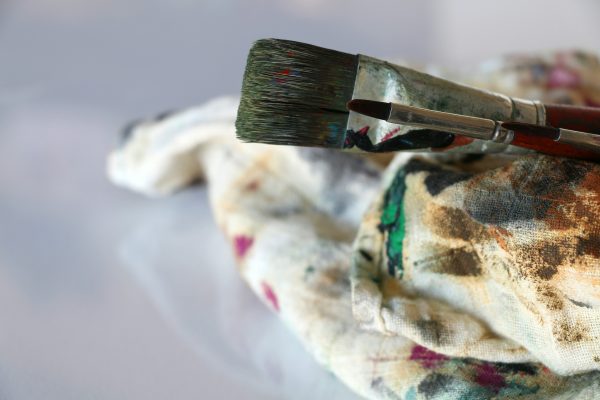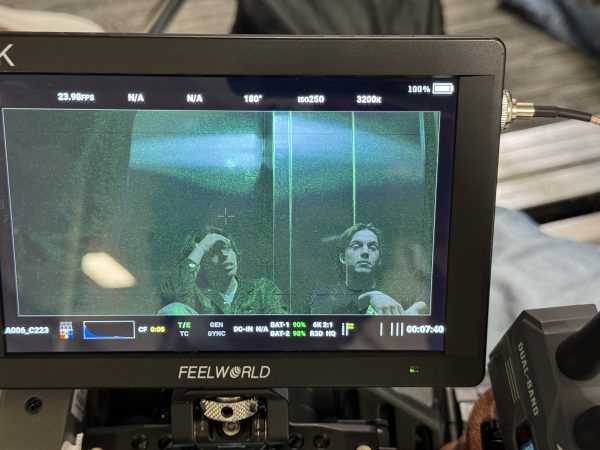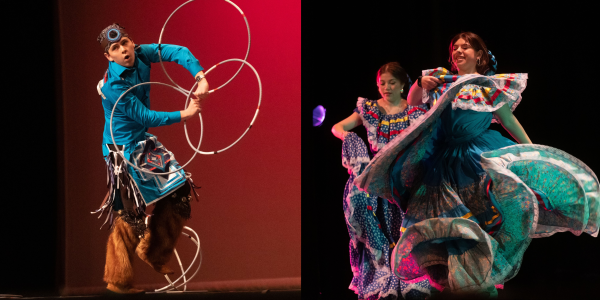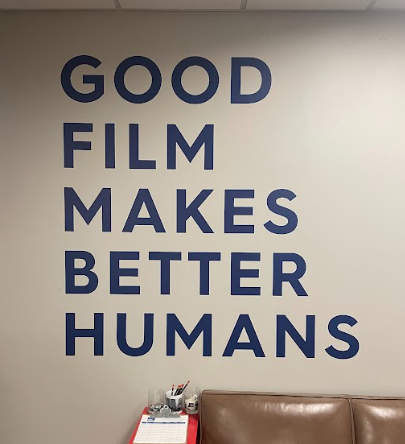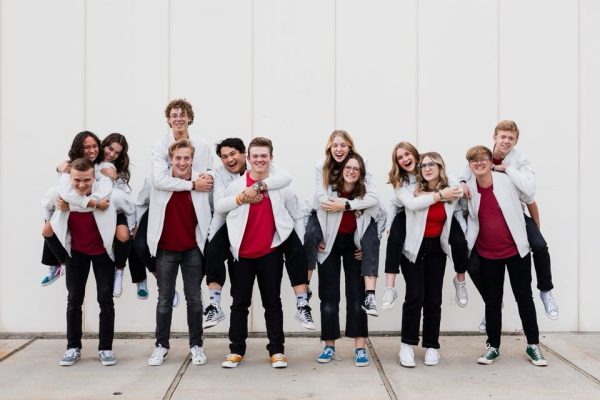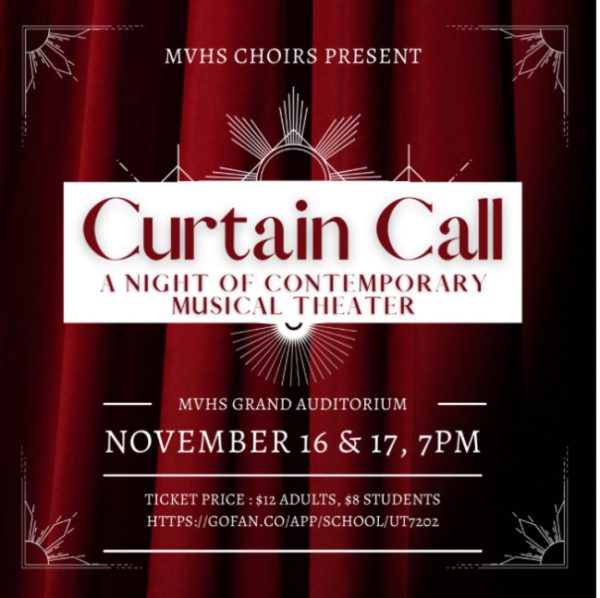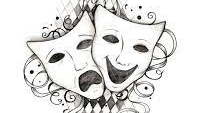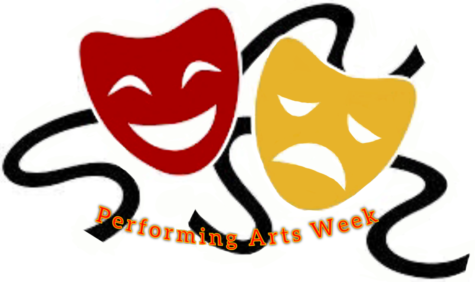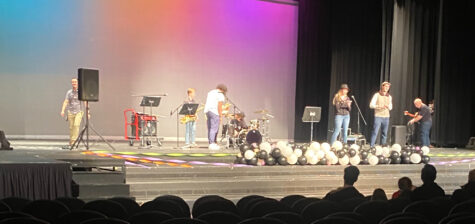Escape room costumes
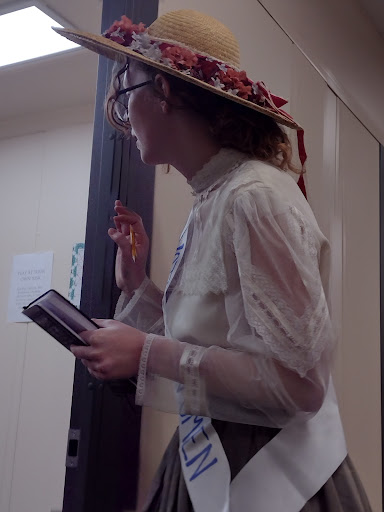
To raise money for the drama department, students performed in an Escape Room about a wild story of time travelers trapped in a dysfunctional household. Audience members would enter the stage where the actors would guide them through the Little Theater.
There were two actors for each character, so each cast was a unique encounter for every group that came through. The way the actors portrayed the character and interacted with the audience was special. The performance of each actor was directed to be like an actual encounter with a real person, this created a personal relationship with audience and actor which strengthened the reality the story required.
This performance was up close, so little details, either on the set, verbal, or costumed were extremely important. Costumes were approached more like actual outfits to really indulge and reinforce the intimate experience. Each cast was appropriately dressed for their correlating time period, but because of the diversity in looks and acting styles, the costumes reflected the personality of both the actor and character. This created comfortability in the actors, because adorning the costume means stepping into character, as well as comfortability in the audience because they were like real people to interact with instead of just theatrical students. For both the actors and the audience, the costumes supported a stronger performance and a more enjoyable event.
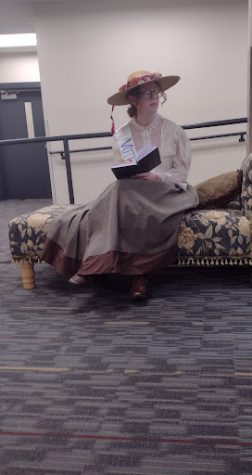
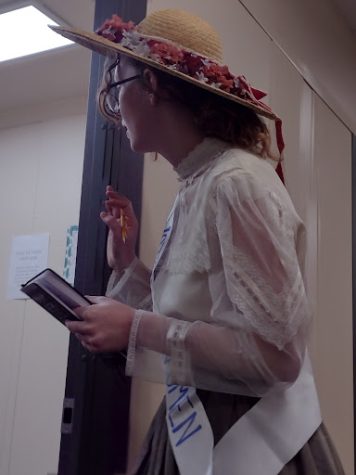
One character, Alice Highland, was a women’s suffragist. The costume reflected the trends of the 1910-20s, and the social stance of the character. A white lacy bodice, lambchop sleeves, and a high neckline, was a staple in most women’s closets. She carries around a black leather book, and her hair is neatly tucked into a low bun that hangs under her floral straw hat. It’s the boots, dark green cotton skirt, and homemade sash that really brings the character, Alice, to life.
Aliya Jakeman, the actress for cast B, played Alice as a nosy, excitable, knowledgeable, passionate young woman. The innocence of the cream-white reflects youth and eagerness, whereas the vibrant and colorful flowers in her hat show off a more fiery and sometimes cheeky persona.
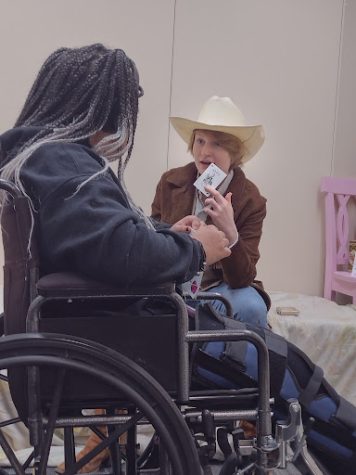
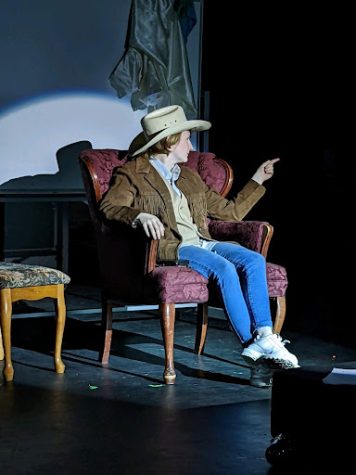
Sam, a friendly, immature, and animated cowboy wore something rather neat for a lonesome cattle-driver. Classic details like ripped jeans, a brown hide jacket with tassels, and a tall cowboy hat at first seem like the safest and easiest option. But, because Sam is played as such a wholesome, kind, and silly man, it only seems right to have something that’s reminiscent of the 1950’s childish ‘cowboys and indians’ motifs.
The costume isn’t historically accurate, but because of the retro-futurism themes that run through the show, the costume is campy, not cheesy. Skylinn Cox, the actor for cast B, truly embodied the big-brother attitude that Sam has. They give the tassels and blue jeans justice, and they wear the cowboy hat as a badge of honor.
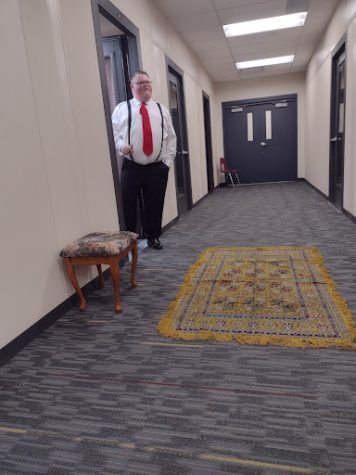
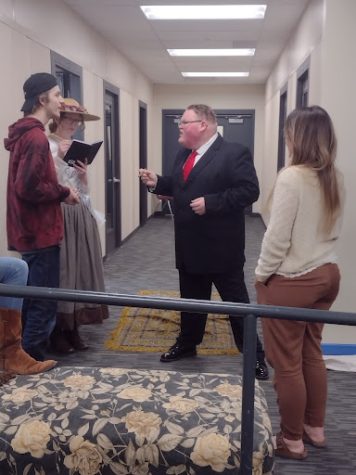
Mr. Smalls, the biggest guy in town, is a powerful, sharp, and intimidating figure. His sleek all black suit, shiny dress shoes, and pristine white shirt is a timeless look. The suspenders, slicked hair, and shocking red tie solidify the look of a vintage organized-crime superstar.
Walker Alldredge, from group B, performed professionally and strongly. His presence was intense and mesmerizing. He is comparable to other black suited figures like Marlon Brando in The Godfather or Robert De Niro in The Irishman. The acting is powerful, the clean suit, stiff collar, and domineering red neck-tie amplify this character like it came straight from a mob-boss movie.
Together, the time-traveling trio dominate the ‘stage’, creating an atmosphere of fantasy that the audience, of children and adults alike, could cheerfully luxuriate in. The Escape Room was successful and fulfilling for both the cast and audience, selling out all performances within the night.
